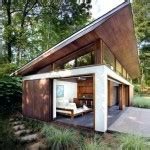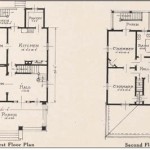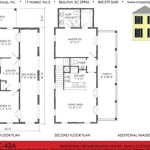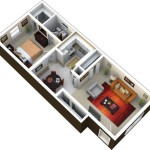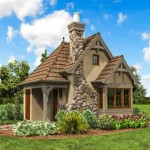Small two-bedroom house plans are designed to provide affordable living spaces with a limited footprint. These plans are ideal for individuals, couples, or small families seeking a comfortable and efficient home. They typically feature a living room, kitchen, two bedrooms, one to two bathrooms, and possibly a small outdoor area.
Small two-bedroom house plans offer several advantages. They are often more cost-effective to build and maintain than larger homes, making them accessible to a wider range of buyers. They can be easily customized to suit individual needs and preferences, allowing homeowners to create a personalized living space. Additionally, these plans are often energy-efficient, reducing utility bills and environmental impact.
In the following sections, we will explore various aspects of small two-bedroom house plans, including their benefits, design considerations, and popular floor plan options. We will also provide practical tips and advice for those considering building or purchasing a small two-bedroom home.
Important Considerations for Small Two-Bedroom House Plans:
- Maximize space and storage
- Energy efficiency
- Functional layout
- Customizable design
- Natural lighting
- Outdoor living spaces
- Accessibility
- Cost-effectiveness
These key points should be carefully considered when designing or selecting a small two-bedroom house plan to ensure a comfortable, functional, and enjoyable living space.
Maximize space and storage
In small two-bedroom house plans, maximizing space and storage is essential for creating a comfortable and functional living environment. Here are some key strategies to achieve this:
1. Vertical Storage: Utilize vertical space by installing shelves, cabinets, and drawers that reach up to the ceiling. This is particularly useful in areas like kitchens, bathrooms, and closets where storage is often limited. Consider using stackable bins and containers to maximize vertical space in pantries, cabinets, and under beds.
2. Multi-Purpose Furniture: Choose furniture that serves multiple functions. For example, ottomans with built-in storage can provide extra seating and a place to store blankets, pillows, or toys. Coffee tables with drawers or shelves can offer additional storage space for books, magazines, or electronics.
3. Built-In Storage: Incorporate built-in storage solutions into the design of the house. This could include bookshelves, cabinets, drawers, and closets that are seamlessly integrated into the walls or under stairs. Built-in storage not only saves space but also creates a polished and cohesive look.
4. Utilize Awkward Spaces: Make use of often-overlooked spaces, such as the area under stairs, above doorways, or in corners. Install shelves, drawers, or cabinets in these spaces to store items that would otherwise clutter up the main living areas.
5. Declutter and Organize: Regularly declutter and organize your belongings to minimize the accumulation of unnecessary items. Use drawer dividers, shelf organizers, and baskets to keep items neat and tidy. By maintaining a clutter-free environment, you can create the illusion of more space.
Energy efficiency
In today’s environmentally conscious world, energy efficiency has become a top priority in residential design. Small two-bedroom house plans can be particularly well-suited for energy efficiency due to their compact size and reduced energy requirements. Here are some key considerations for enhancing energy efficiency in small two-bedroom house plans:
1. Insulation: Proper insulation is crucial for maintaining a comfortable indoor temperature and reducing energy consumption. Ensure that the walls, roof, and foundation of the house are adequately insulated. Consider using high-performance insulation materials such as spray foam or cellulose to minimize heat loss and gain.
2. Windows and Doors: Windows and doors can be major sources of energy loss. Choose energy-efficient windows and doors with double or triple glazing and low U-factors. Consider installing storm windows or doors in colder climates to provide an additional layer of insulation.
3. Lighting: Lighting accounts for a significant portion of household energy consumption. Opt for energy-efficient LED or CFL bulbs throughout the house. Install dimmer switches to adjust lighting levels and save energy when full brightness is not required.
4. Appliances: Energy-efficient appliances can make a substantial impact on energy consumption. Look for appliances with the Energy Star label, which indicates that they meet strict energy efficiency standards. Consider investing in smart appliances that can be controlled and monitored remotely to optimize energy usage.
Functional layout
A well-planned layout is essential for creating a comfortable and functional small two-bedroom house. Here are some key considerations for maximizing functionality in your floor plan:
- Open floor plan: An open floor plan combines the living room, dining room, and kitchen into one large space. This layout promotes a sense of spaciousness and allows for multiple activities to occur simultaneously. It is particularly suitable for small homes as it creates a more expansive and inviting atmosphere.
- Defined spaces: While open floor plans offer a sense of spaciousness, it is important to define different areas within the home to create a sense of separation and privacy. Use furniture, rugs, or screens to delineate different zones for living, dining, and cooking.
- Traffic flow: Consider the flow of traffic when planning the layout of your home. Ensure that there is a clear and unobstructed path between different rooms and areas. Avoid creating bottlenecks or awkward transitions.
- Natural light: Position windows and doors strategically to maximize natural light throughout the home. Natural light not only reduces the need for artificial lighting but also creates a more cheerful and inviting ambiance.
By carefully considering these factors, you can create a functional layout that maximizes space, enhances comfort, and caters to your specific lifestyle.
Customizable design
Small two-bedroom house plans offer a high degree of customizable design, allowing homeowners to tailor their living spaces to their unique needs, preferences, and lifestyle. Here are some key aspects to consider when customizing your small two-bedroom house plan:
1. Flexible floor plans: Many small two-bedroom house plans are designed with flexible floor plans that can be easily modified to accommodate different needs. For example, walls can be added or removed to create additional bedrooms, enlarge the living space, or incorporate a home office. This flexibility allows homeowners to adapt their home to changing circumstances, such as a growing family or the need for a dedicated workspace.
2. Multi-purpose spaces: Small two-bedroom house plans often incorporate multi-purpose spaces that can serve multiple functions. For instance, a loft area could be used as a guest room, a home office, or a playroom. A spare room could be designed to function as both a bedroom and a home gym. By incorporating multi-purpose spaces, homeowners can maximize the functionality of their small homes without sacrificing comfort or style.
3. Personal touches: Small two-bedroom house plans provide ample opportunities for homeowners to add their personal touches and create a unique living space. This could involve choosing custom finishes, such as flooring, countertops, and cabinetry, that reflect their taste and style. Homeowners can also incorporate decorative elements, such as artwork, plants, and textiles, to create a warm and inviting ambiance.
Natural lighting
Natural lighting plays a crucial role in creating a comfortable, healthy, and energy-efficient small two-bedroom house. Here are four key benefits of maximizing natural lighting in your home:
- Reduced energy consumption: Natural light can significantly reduce the need for artificial lighting, leading to lower energy consumption. By incorporating large windows and skylights, you can harness natural light to illuminate your home during daylight hours, reducing your reliance on electricity.
- Improved mood and well-being: Natural light has been shown to have a positive impact on our mood and well-being. Exposure to sunlight can boost serotonin levels, which is associated with feelings of happiness and calmness. Natural light can also help regulate our circadian rhythm, improving sleep quality and overall health.
- Enhanced space perception: Natural light can make small spaces feel larger and more inviting. By allowing natural light to flood into your home, you can create the illusion of more space and reduce feelings of confinement.
- Improved indoor air quality: Natural light can help improve indoor air quality by reducing moisture and promoting ventilation. Sunlight can kill mold and bacteria, creating a healthier living environment.
To maximize natural lighting in your small two-bedroom house plan, consider the following strategies:
- Position windows and skylights strategically to allow natural light to penetrate deep into the home.
- Use light-colored paints and finishes to reflect and amplify natural light.
- Avoid using heavy curtains or blinds that can block natural light.
- Incorporate reflective surfaces, such as mirrors and metallic accents, to bounce light around the space.
Outdoor living spaces
Small two-bedroom house plans can benefit greatly from the inclusion of outdoor living spaces. These spaces extend the living area beyond the confines of the house, providing additional room for relaxation, entertainment, and enjoyment of the outdoors. Here are four key benefits of incorporating outdoor living spaces into your small two-bedroom house plan:
1. Extended living space: Outdoor living spaces essentially extend the living area of your home, providing additional room for activities, relaxation, and entertainment. Whether it’s a cozy patio for morning coffee, a spacious deck for grilling and dining, or a serene garden for relaxation, outdoor living spaces offer a seamless transition between indoor and outdoor living.
2. Increased natural light and ventilation: Outdoor living spaces allow for increased natural light and ventilation to enter the home. By incorporating large windows, doors, or skylights that connect to the outdoor space, you can create a brighter and more airy indoor environment. This not only enhances the overall ambiance of the home but also reduces the need for artificial lighting and improves indoor air quality.
Accessibility
Accessibility in small two-bedroom house plans is essential for creating a comfortable and inclusive living environment for individuals of all ages and abilities. By incorporating accessible design features, homeowners can ensure that their homes are safe, easy to navigate, and adaptable to changing needs over time.
One important aspect of accessibility is ensuring that the home is wheelchair accessible. This includes providing wide doorways and hallways, ramps or elevators to access different levels, and accessible bathrooms with roll-in showers or grab bars. Additionally, lever-style door handles and faucets are easier to use for individuals with limited hand mobility.
Another important consideration is visual accessibility. This involves using high-contrast colors and textures to make it easier for people with visual impairments to navigate the home. Large print labels and signage can also assist individuals with low vision. Additionally, providing good lighting throughout the home can improve visibility and safety.
Cognitive accessibility is also important to consider. This involves designing the home in a way that is easy to understand and navigate for individuals with cognitive disabilities. Simple and clear layouts, consistent color schemes, and familiar landmarks can help reduce confusion and anxiety. Additionally, assistive technology, such as voice-activated devices or smart home systems, can enhance independence and convenience.
By incorporating these accessible design features into small two-bedroom house plans, homeowners can create homes that are not only comfortable and stylish but also inclusive and adaptable to the needs of all residents.
Cost-effectiveness
Cost-effectiveness is a crucial consideration for small two-bedroom house plans. By implementing smart design strategies and choosing affordable materials, homeowners can build or purchase a small home that meets their needs without breaking the bank.
One key aspect of cost-effective design is optimizing the floor plan. A well-designed floor plan can minimize wasted space and reduce construction costs. Consider opting for a simple, rectangular or square floor plan, which is typically more cost-efficient to build than complex or irregular shapes. Additionally, avoid unnecessary hallways and corridors, as these can add to the overall square footage and construction costs.
Material selection
The choice of materials can significantly impact the cost of a small two-bedroom house. Opt for affordable and durable materials that provide good value for money. For example, consider using vinyl or laminate flooring instead of hardwood, and choose energy-efficient windows and appliances to save on utility bills in the long run. Additionally, explore the use of sustainable materials, such as recycled or reclaimed wood, which can often be purchased at a lower cost than traditional building materials.
Construction methods
The construction method can also affect the cost of a small two-bedroom house. Traditional stick-built construction is typically the most expensive method, while modular or prefabricated construction can offer significant cost savings. Modular homes are built in sections off-site and then assembled on the building site, reducing labor costs and construction time. Prefabricated homes, on the other hand, are built entirely off-site and delivered to the building site ready to be installed, further reducing construction costs and timelines.
By carefully considering these factors, homeowners can create cost-effective small two-bedroom house plans that meet their budget and lifestyle needs without compromising on quality or comfort.










Related Posts


